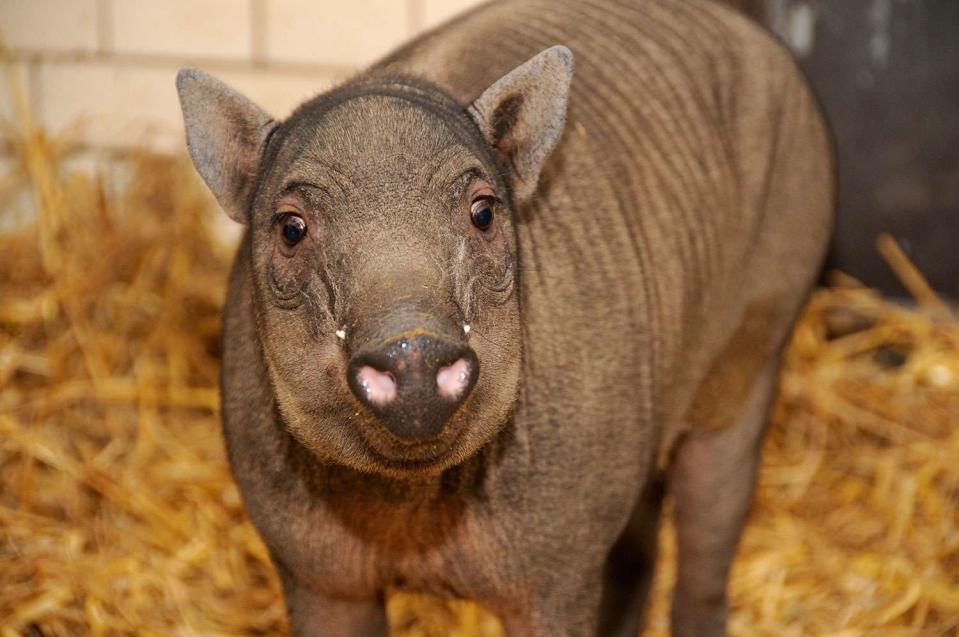'Bizarre-Looking' Babirusa, or 'Pig Deer,' Born in Miami Zoo
The newborn babirusa "remains isolated with its mother in a secluded holding area," shared Zoo Miami

Hohlfeld/ullstein bild via Getty
Stock image of a BabirusaA baby babirusa was recently born at Zoo Miami.
The rare endangered babirusa — which means “pig deer” in the Malay language — was born on Dec. 15, 2023, the zoo announced on Instagram Tuesday.
This was the first time a babirusa was born at the zoo. The swine's sex is still undetermined because it remains in isolation with its mother.
The baby “pig deer” is the first offspring for both its mother, Maggie, and father, Harry. Maggie is a 5-year-old babirusa from the St. Louis Zoo, and Harry is a nearly 5-year-old from the Audubon Zoo in New Orleans.
Although the baby and mother remain in isolation, the father can be seen by zoo visitors. The isolated babirusas will remain out of public display for the next several weeks so the newborn can adapt to its habitat.
Related: Critically Endangered Amur Leopard Twins Born at the San Diego Zoo: 'A Glimmer of Hope'
Babirusas are native to Indonesia and found in wet climates — such as swamps and rainforests. The zoo shared that the species can live around 10 years in the wild but can double its lifespan while under the care of humans.
Currently, the species' “greatest threats are habitat loss and hunting for food,” per the zoo’s announcement.
The babirusa is an omnivorous animal and will “eat almost anything” - even sometimes their young - shared Zoo Miami.
Never miss a story — sign up for PEOPLE's free daily newsletter to stay up-to-date on the best of what PEOPLE has to offer, from celebrity news to compelling human interest stories.
Related: Critically Endangered Species of Horse Born at San Diego Zoo: 'A Tremendous Moment'
Per the zoo, the animal is “considered to be one of the most bizarre-looking” swine amongst the variety of different wild swine species.
The “pig deer” name comes from “the strange appearance of males whose tusks look like antlers growing on the top of their heads,” Zoo Miami shared in the Instagram caption. The babirusa has a set of upper tusks that grow up through the top of its face and has a second set of tusks on the lower jaw.
The upper tusks can curl back into the animal’s face, while the lower tusks curl in upward motion and away from the babirusa’s head. Males and females are primarily hairless, and females do not have tusks.
For more People news, make sure to sign up for our newsletter!
Read the original article on People.


